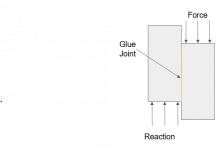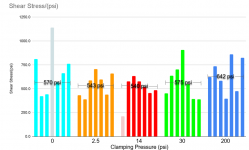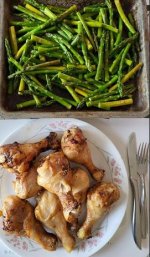jaguar36
Member
- Joined
- Jul 19, 2011
- Messages
- 288
I wanted to test to see if you can over-clamp a joint, as well as how much clamping pressure you need to get a reasonable joint strength. So I went and built a ASTM D905 compression shear tester. This tester measures the shear strength of a joint (as opposed to the tensile strength). Most woodworking joints are usually primarily loaded in shear, think like a domino or a box joint. I like this test as it usually fails the glue, rather than the wood.
[attachimg=1]
I made up a bunch of wood blocks and glued them together such that they have a 1"x1" glue surface, and clamped them at different levels. Some I just squeezed together with my fingers and let sit, some with spring clamps, and some I put screw clamps on and tighten the junk out of them. Surprisingly, I found that even with no clamps at all I still got good joint strength. Clamping at a crazy high level (200psi/1.37Mpa) didn't show any drop off in joint strength either (and maybe a bit of benefit). Finally I put together a pair that I clamped down so hard as to squash the wood, and those did show a ~20% reduction in strength. However that may have been from damage to the wood.
Here's a pretty graph of the results.
[attachimg=2]
I made a video on it as well, if you'd like some more info or to watch the failures.
[attachimg=1]
I made up a bunch of wood blocks and glued them together such that they have a 1"x1" glue surface, and clamped them at different levels. Some I just squeezed together with my fingers and let sit, some with spring clamps, and some I put screw clamps on and tighten the junk out of them. Surprisingly, I found that even with no clamps at all I still got good joint strength. Clamping at a crazy high level (200psi/1.37Mpa) didn't show any drop off in joint strength either (and maybe a bit of benefit). Finally I put together a pair that I clamped down so hard as to squash the wood, and those did show a ~20% reduction in strength. However that may have been from damage to the wood.
Here's a pretty graph of the results.
[attachimg=2]
I made a video on it as well, if you'd like some more info or to watch the failures.



